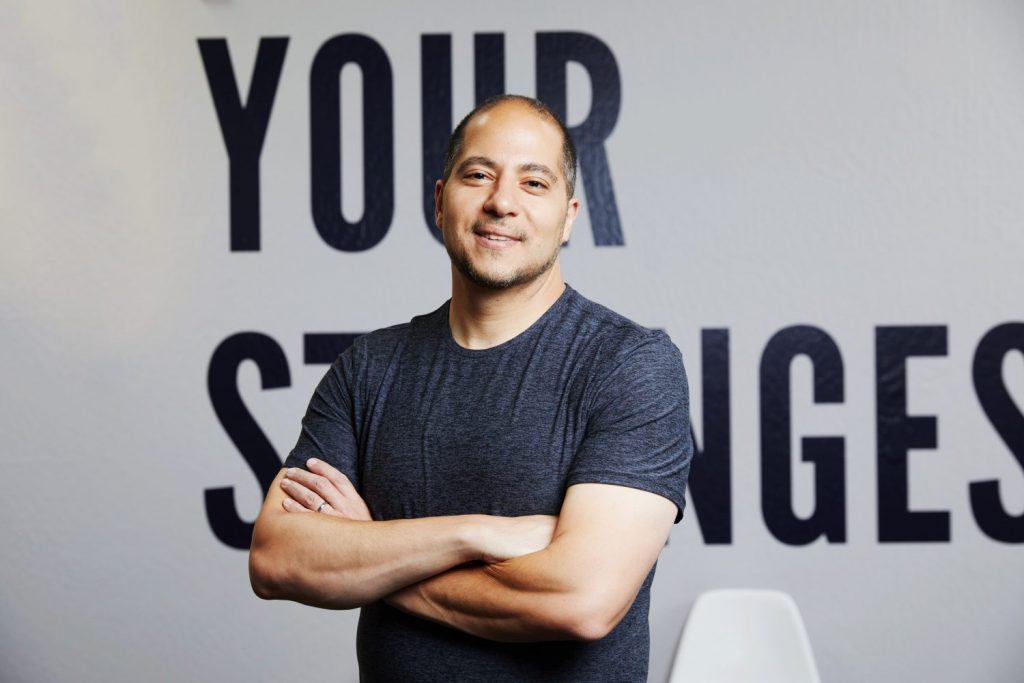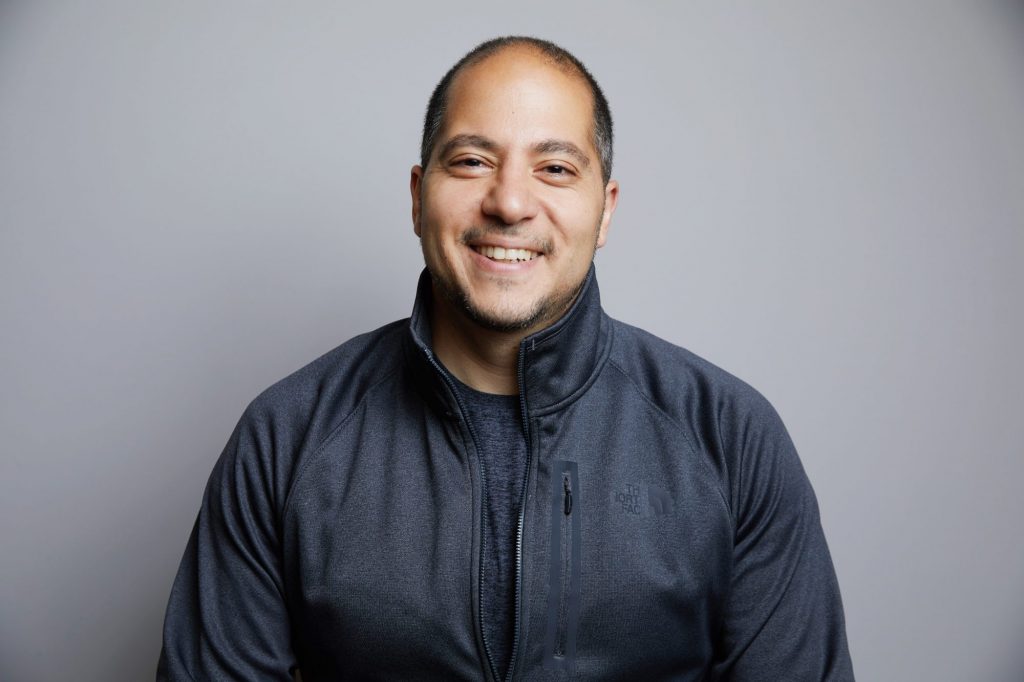Aly Orady spent over 15 years in technology building super computers. Professionally, he was doing very well, but his health started taking some hits. While he struggled with his weight since childhood, things progressively got worse as the years passed.
After being diagnosed with diabetes and sleep apnea, Orady decided it was time to tell the supercomputers they’d have to be a bit less super while he focused on his fitness. In 2013, he quit his job for nine months and lost 70 pounds.
Throughout that process, he learned about how difficult strength training is for most people.
Ultimately, he wanted to figure out a way to strength train from the convenience of home, shrink the equipment down, and have modern measurement tools and on-demand coaching to support him. In 2015, Orady began quietly working on Tonal, a wall-mounted fitness system using “digital weights”, a first-ever technological contribution to fitness.
Now that it’s officially on the market, check out what we thought of it after our first look here.
Orady knows a thing or two about technology, fitness, and business. Here are some lessons on how to be a little bit better at whatever it is you do, from the Bay Area CEO himself.

What was the worst idea you ever had and what did you learn from it?
Well, this isn’t my first startup. I had another startup where we were trying to reinvent the way desktop computing was done. The startup was, by some measure, successful. We got to a point where we were raising $10 million and we were selling $10 million worth of product every year. In many other ways, it was a huge failure. We were trying to get to the point where we were selling $100 million worth of product a year.
It was a terrible idea because I didn’t really know what I was up against. We thought that we had reinvented the way desktop computers worked but we failed to really recognize who all the key players were in the industry, what control they had, what levers they had and how we basically had no great path to get what we believed to be a great technology out to the world.
It’s not just about the technology sometimes. It’s about figuring out how to really deliver it to the end user, understanding how the ecosystem works. That was a six-year lesson for me.
Say someone has a great idea, what should be their very first move?
I would tell people to write down the three or four or five things that they’re going to need in order to be successful and then go find, on that list, the thing that they’re least comfortable with. Go figure that out first.
As entrepreneurs, and actually it’s human nature, we all have a tendency to want to immerse ourselves in the most comfortable parts, the things that we’re so good at. We tend to put off and neglect the pieces that we’re not good at. If you really believe something is important, you have to go after it, even if you’re not comfortable.
I’ve looked at a lot of different ideas over the years. I tell myself, “You’re not allowed to write code until you’ve talked to at least ten customers first” or “You’re not allowed to do xyz until you do this other really hard thing first.” It’s about really pushing yourself out of your comfort zone, doing things that are important that we might otherwise be inclined to want to put off.
What does it actually mean to be an entrepreneur aside from “long hours” and “hard work”?
At the end of the day, the buck stops with you. Whenever something absolutely has to get done, whenever something goes wrong, people will help you. Employees who are passionate and employees who are driven will do as much as they can, but there comes a point where you’re ultimately responsible and what that translates into is, as an entrepreneur, you’re the one who is doing all the gap-filling in the organization.
You’re constantly trying to hire people to fill gaps. You’re doing intern jobs. You’re putting your finger in this hole to keep the water from leaking out. You’re trying to whack this mole over here. That just turns into more work than you ever expected.
Often, it’s a surprise. A lot of these things happen, you can’t anticipate a lot of this stuff. It’s happening last minute. That’s probably the hardest thing. You’re trying to constantly hire people to do your job and you never succeed at that. There’s just always one more person you’ve got to hire, if you’re being successful.
What’s your take on learning from failure and staying positive when everything seems to be going wrong?
I’ve actually always had this saying, which is, “As an entrepreneur, you have to have thick skin and not a thick head.” What I mean by that is a thick head means you’re stubborn. You keep insisting on doing the same thing over and over again without learning. A thick skin means you take failure in stride and you learn from it.
You will fail and you have to take what you’re learning and use that as an opportunity to iterate and do the next thing, not just keep persisting mindlessly at doing the same failing thing. That’s really, I believe, the most important part, driving that cycle of learning.
Entrepreneurs by definition are doing something that’s never been done before. The path forward is not clear. You have to discover that path and you have to do it with an open mind and an open heart.
How do you stay ahead of the competition?
You have to be very aware of your strengths and very aware of their blind spots. Every company, as it grows, develops blind spots, even its own. As we grow, at some point, we’re [Tonal] going to develop blind spots and have to work hard to try and see what we can’t see. If you’re aware of the places that your competition naturally will not go, it really shows you where a lot of your opportunity is.
How do you cause a positive disruption and spark change?
My first instinct is, and I know this sounds cliché, but you have to challenge assumptions. You have to challenge conventional wisdom.
I feel like there’s this thing that I call institutionalized discouragement. What I mean by that is if you walk into a kindergarten classroom, and you say, “Hey, kids. Raise your hand if you think you’re an artist,” everyone will raise their hand. If you walk into a fifth-grade classroom and ask the same question, you’ll be lucky if you see two or three hands. At some point, the kids were told or came to believe that they weren’t artists. They gave up on being an artist and they no longer believe that it’s possible.
I’ve been inside big companies and I’ll say things like, “Hey, why don’t we do it this way?” or “why don’t we do this?” or “have we considered that?” and everyone in the room will look at you and with one voice are like, “Oh, that’s not possible.” At some point, the institution had learned not to do certain things, not to try certain things, not to think in certain ways. That limits the possibilities for them. If you want to be innovative, if you want to be disruptive, you have to look beyond all these things that people think are impossible.
Who or what was your childhood inspiration growing up?
They’ve changed tremendously. Its’ funny. I know this is crazy but I remember watching Gilligan’s Island as a child. My favorite character was The Professor. I was the type of kid who would take my toys apart rather than playing with them. I was more interested in how they worked. I think I was always inspired by just curiosity and how things worked.
And how have they changed in your adult life?
Right now my inspirations are all amazing business leaders. I’ve found that the greatest technological innovations often happen by yourself in a lab late at night whereas building an amazing business takes thousands of people working together and figuring out how to lead thousands of people with their various backgrounds and attitudes and emotions and skills and blind spots and strengths. That’s an incredibly difficult thing to do and I have tremendous respect for people who have done it well, anyone from Jeff Bezos to Howard Schultz to Steve Jobs. It’s really inspirational how they are able to build up those organizations and build the DNA to get them to do what they’ve done.

